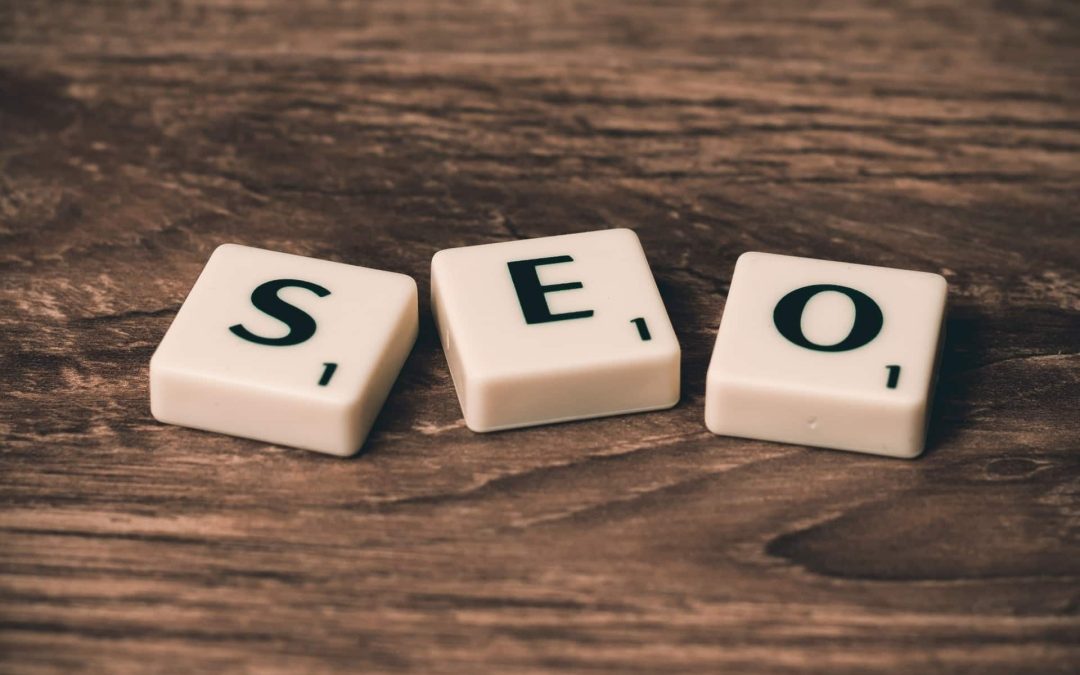Overview of infographic content optimization
In today’s digital landscape, where attention spans are shorter than ever, it’s vital to find innovative ways to capture and retain your audience’s interest. One powerful tool that can help you achieve this is infographic content optimization. By combining visually appealing graphics with optimized text, you can create informative and engaging infographics that not only convey your message effectively but also boost your business’s online presence.
Infographic content optimization involves a strategic approach to crafting and presenting information in a visually compelling manner. It goes beyond simply creating an eye-catching design; it also focuses on maximizing the impact of your content by incorporating SEO-friendly elements. This combination of creative design and search engine optimization techniques makes infographics an invaluable asset for businesses looking to enhance their online visibility and engage their target audience.
In the following sections, we will explore the importance of infographic content optimization and outline the steps, tools, and best practices you need to know in order to leverage this powerful marketing tool effectively. Whether you’re a small business owner, a marketer, or a content creator, this article will provide you with the insights and strategies you need to take your business to the next level.
So, let’s dive in and discover how infographic content optimization can revolutionize your online presence and help you achieve your business goals.
Importance of Infographic Content Optimization
In today’s digital landscape, infographic content optimization has become crucial for businesses looking to boost their online presence and engage with their target audience. By leveraging the power of infographics and optimizing their content, businesses can achieve increased visibility, enhanced user experience, and improved SEO rankings.
Increased Visibility
Infographics are visually appealing and easily shareable, making them an effective way to grab the attention of online users. They allow businesses to present complex information in a concise and visually appealing manner, making it easier for users to understand and retain the message. When optimized properly, infographics have the potential to go viral, reaching a wider audience and increasing brand visibility. By incorporating relevant keywords, alt text, and descriptions, businesses can increase the chances of their infographics being discovered through search engines and social media platforms.
Enhanced User Experience
User experience is a key factor in driving engagement and conversions. Infographics provide a visually stimulating and interactive experience for users, allowing them to consume information quickly and easily. By presenting data in a visually appealing format, infographics make it easier for users to understand complex concepts and retain information. With optimized content, businesses can ensure that their infographics are accessible, responsive, and optimized for mobile devices, providing users with a seamless and enjoyable experience.
Improved SEO Rankings
Search engine optimization (SEO) plays a crucial role in driving organic traffic to a website. Infographics, when properly optimized, can contribute to improved SEO rankings. By incorporating relevant keywords, meta descriptions, and alt text, businesses can increase the visibility of their infographics in search engine results pages (SERPs). Additionally, when infographics are shared and embedded on other websites, they can generate backlinks, which are important for boosting a website’s authority and improving its search engine rankings.
Optimizing infographic content involves several steps, including research and planning, choosing the right topic, designing an engaging infographic, optimizing text and keywords, including shareable elements, adding alt text and descriptions, embedding on your website and blog, promoting on social media, and tracking and analyzing performance. By following these steps and utilizing the right tools and resources such as design tools, SEO tools, and analytics tools, businesses can maximize the impact of their infographics and achieve their desired goals.
To ensure successful infographic content optimization, it is important to follow best practices such as keeping the infographic simple and clear, using high-quality graphics, optimizing for mobile devices, including a call to action, and repurposing and updating infographics regularly. By implementing these strategies, businesses can create visually stunning and highly engaging infographics that capture the attention of their target audience and drive meaningful results.
In conclusion, infographic content optimization is a powerful tool that businesses can leverage to increase their online visibility, enhance user experience, and improve their SEO rankings. By investing time and effort into optimizing their infographic content, businesses can effectively engage with their target audience, drive traffic to their website, and achieve their business objectives. So, whether you’re looking to educate, entertain, or promote, infographics are a valuable asset in your content marketing arsenal.
Steps for Optimizing Infographic Content
When it comes to optimizing infographic content, there are several crucial steps to ensure that your visuals are not only visually appealing but also effective in conveying information. By following these steps, you can boost the impact of your infographics and maximize their potential to engage your audience.
Research and Planning
Before you start creating your infographic, it’s essential to do your research and planning. This involves understanding your target audience, identifying their needs and preferences, and conducting thorough research on the topic you want to cover. By doing so, you can ensure that your infographic will be relevant, informative, and resonate with your audience.
Choose the Right Topic
Selecting the right topic is crucial for the success of your infographic. It should be something that is interesting, valuable, and aligns with your brand or business. Consider topics that are trending or have a high demand among your target audience. By choosing the right topic, you can capture their attention and increase the likelihood of your infographic being shared.
Design an Engaging Infographic
The design of your infographic plays a significant role in its effectiveness. It should be visually appealing, easy to understand, and engaging. Use colors, fonts, and visuals that are consistent with your brand and evoke the desired emotions. Consider using charts, graphs, icons, and illustrations to present information in a visually appealing way. Remember, the goal is to make your infographic visually captivating and encourage your audience to explore its content.
Optimize Text and Keywords
Just like any other form of content, optimizing text and keywords is crucial for improving the visibility of your infographic. Incorporate relevant keywords naturally throughout the text of your infographic to enhance its search engine optimization (SEO). This will help your infographic rank higher in search engine results and increase its discoverability.
Include Shareable Elements
To encourage your audience to share your infographic, it’s important to include shareable elements. This can include embedding social media sharing buttons within the infographic itself, allowing users to easily share it on their preferred platforms. Additionally, consider adding a call to action that prompts users to share the infographic with their networks. By making it easy and enticing for your audience to share, you can increase its reach and potential impact.
Add Alt Text and Descriptions
When optimizing your infographic for accessibility and SEO, don’t forget to add alt text and descriptions. Alt text provides a text alternative for the images within your infographic, allowing visually impaired individuals to understand the content. Descriptions, on the other hand, provide a concise summary of your infographic, making it easier for search engines to index and rank your content.
Embed on Your Website and Blog
To maximize the visibility and reach of your infographic, embed it on your website and blog. This allows your audience to easily access and share it directly from your platform. Embedding your infographic also increases the chances of it being discovered by search engines, further boosting its SEO value.
Promote on Social Media
Social media platforms provide an excellent opportunity to promote your infographic and reach a wider audience. Share your infographic on relevant social media channels and encourage your followers to engage with and share it. Consider creating teaser posts or snippets of the infographic to generate curiosity and drive traffic back to your website or blog.
Track and Analyze Performance
To assess the success of your infographic, it’s important to track and analyze its performance. Utilize analytics tools to measure metrics such as views, shares, and engagement. By monitoring these metrics, you can gain insights into the effectiveness of your infographic and make informed decisions for future content optimization strategies.
By following these steps, you can optimize your infographic content to enhance its visibility, engage your audience, and improve your SEO rankings. Remember to stay consistent with your brand and audience preferences, and always strive to create visually stunning and informative infographics.
Tools and Resources for Infographic Content Optimization
When it comes to infographic content optimization, having the right tools and resources at your disposal can make all the difference. These tools not only streamline the process of creating and optimizing your infographics but also help you track their performance and make necessary improvements. In this section, we will explore some essential tools that can boost your infographic content optimization efforts.
Design Tools
To create visually stunning and engaging infographics, you need access to powerful design tools. Here are a few popular options:
- Canva: Canva is a user-friendly graphic design platform that offers a wide range of customizable templates, fonts, and illustrations. It allows you to design professional-looking infographics even if you have little to no design experience.
- Adobe Illustrator: Adobe Illustrator is a powerful vector graphics editor that provides advanced design features and tools. With its extensive design capabilities, you can create intricate and visually captivating infographics.
- Piktochart: Piktochart is an online design tool specifically tailored for infographics. It offers a drag-and-drop interface, pre-designed templates, and a library of icons and images, making it easy for you to create eye-catching infographics.
SEO Tools
Optimizing your infographics for search engines is crucial for improving their discoverability. Here are some essential SEO tools that can help you optimize your infographic content:
- Google Keyword Planner: Google Keyword Planner allows you to identify relevant keywords and phrases that can increase the visibility of your infographics. By incorporating these keywords strategically in your infographic content, you can improve its search engine rankings.
- SEMrush: SEMrush is a comprehensive SEO tool that provides insights into keyword research, competitor analysis, and backlink opportunities. It helps you optimize your infographics by identifying relevant keywords and analyzing your competitors’ strategies.
- Yoast SEO: Yoast SEO is a popular WordPress plugin that offers real-time content analysis and suggestions for optimizing your infographics. It provides recommendations for keyword usage, readability, and metadata, helping you create SEO-friendly infographics.
Analytics Tools
Tracking and analyzing the performance of your infographics is essential for understanding their impact and making data-driven decisions. Consider using the following analytics tools:
- Google Analytics: Google Analytics is a powerful web analytics tool that provides detailed insights into your website’s traffic and user behavior. By setting up goals and tracking events, you can monitor the performance of your infographics and identify areas for improvement.
- Hotjar: Hotjar is a user behavior analytics tool that offers heatmaps, session recordings, and surveys. It helps you understand how users interact with your infographics, allowing you to optimize their design and user experience.
- BuzzSumo: BuzzSumo is a content research tool that allows you to analyze the performance of your infographics and identify the most popular topics and formats in your industry. By leveraging this data, you can create infographics that resonate with your target audience.
With these tools and resources at your disposal, you can streamline your infographic content optimization process and create visually stunning infographics that engage your audience and drive results. Remember to choose the tools that align with your specific needs and goals, and always stay up-to-date with the latest trends and best practices in infographic design and optimization.
Next, let’s explore some best practices and tips to maximize the impact of your optimized infographics. Stay tuned!
Best Practices and Tips
Keep It Simple and Clear
When it comes to creating effective infographics, simplicity is key. Keep it simple and clear so that your audience can easily understand the information you’re trying to convey. Avoid cluttering your infographic with too much text or unnecessary graphics. Instead, focus on presenting your data in a visually appealing and digestible manner.
To keep your infographic simple and clear, use concise and straightforward language. Avoid jargon or complicated terminology that might confuse your readers. Break down complex concepts into easily understandable chunks and use bullet points or numbered lists to organize information.
Additionally, make sure your design is clean and uncluttered. Use a minimalist approach and choose a cohesive color scheme that enhances readability. Use ample white space to give your infographic room to breathe and guide your audience’s attention to the most important elements.
Use High-Quality Graphics
Visual appeal is crucial when it comes to infographics. To make your infographic stand out and capture your audience’s attention, use high-quality graphics. Use images, icons, and illustrations that are visually appealing and relevant to your content.
Investing in professional graphic design tools or hiring a graphic designer can help you create eye-catching visuals. Alternatively, you can explore online design platforms and stock image websites for high-quality graphics that align with your brand and message.
Remember, the quality of your graphics directly impacts the overall aesthetics and perceived value of your infographic. High-resolution images and crisp icons will make your infographic look polished and professional, enticing your audience to engage with the content.
Optimize for Mobile
In today’s mobile-centric world, optimizing your infographics for mobile devices is essential. Ensure that your infographic is responsive and adapts seamlessly to different screen sizes, whether it’s being viewed on a smartphone, tablet, or computer.
Consider the mobile user experience when designing your infographic. Use fonts that are legible on smaller screens and ensure that all elements are easily tappable and interactive. Avoid using tiny text or intricate details that may become distorted or hard to read on mobile devices.
Test your infographic on multiple devices and screen sizes to ensure optimal display and functionality. By optimizing for mobile, you’ll reach a wider audience and provide a seamless user experience across all devices.
Include a Call to Action
Infographics are not just about presenting information; they also serve as powerful marketing tools. Include a call to action in your infographic to encourage your audience to take the desired action after engaging with your content.
A call to action can be anything from subscribing to your newsletter, visiting your website, or sharing your infographic on social media. It should be clear, concise, and placed strategically within your infographic to maximize its visibility.
Consider using persuasive language and compelling visuals to make your call to action more enticing. For example, you can use bold and colorful buttons or arrows to draw attention to the desired action. Make it easy for your audience to follow through by including clickable links or providing clear instructions on how to take the next step.
Repurpose and Update Infographics
Infographics have a longer lifespan than traditional blog posts or social media updates. They can continue to generate value long after their initial release. Repurpose and update your infographics to keep them relevant and capitalize on their potential.
Repurposing your infographics allows you to reach new audiences and breathe new life into your content. You can convert your infographic into a slideshow, video, or even a series of social media posts. This way, you can cater to different preferences and engagement channels.
Additionally, keep your infographics up to date by regularly reviewing and updating the data and information they contain. This ensures that your content remains accurate and valuable to your audience. You can also consider creating new versions of existing infographics to provide fresh perspectives or delve deeper into specific topics.
By repurposing and updating your infographics, you can maximize their impact and extend their reach, ultimately boosting your business’s visibility and engagement.
In conclusion, following these best practices and tips will help you optimize your infographic content for maximum impact. Keep it simple and clear, use high-quality graphics, optimize for mobile devices, include a call to action, and don’t forget to repurpose and update your infographics. By doing so, you’ll create engaging and shareable visuals that boost your business’s visibility, enhance user experience, and improve your SEO rankings.
Conclusion
In conclusion, infographic content optimization is a powerful strategy that can boost your business in numerous ways. By following the steps outlined in this article, you can increase visibility, enhance user experience, and improve SEO rankings for your website.
Through thorough research and planning, you can ensure that your infographic addresses the needs and interests of your target audience. By choosing the right topic and presenting it in an engaging and visually appealing way, you can capture the attention of your readers and keep them engaged.
Optimizing the text and keywords in your infographic will make it more SEO-friendly, ensuring that it ranks higher in search engine results. Including shareable elements will encourage others to promote and distribute your infographic, expanding its reach even further.
Adding alt text and descriptions to your infographic will make it accessible to individuals with visual impairments, while embedding it on your website and blog will make it easily discoverable by your website visitors.
Promoting your infographic on social media platforms will help generate more traffic and engagement, while tracking and analyzing its performance will provide valuable insights for future optimization efforts.
To make the process easier, there are various tools and resources available to assist you in designing, optimizing, and analyzing your infographic. From design tools to SEO tools and analytics tools, these resources can streamline your optimization process and help you achieve better results.
By following best practices and tips, such as keeping your infographic simple and clear, using high-quality graphics, optimizing for mobile, including a call to action, and repurposing and updating your infographics, you can maximize their impact and ensure long-term success.
Overall, infographic content optimization is an essential component of any content marketing strategy. It allows you to convey complex information in a visually appealing and easily digestible format, capturing the attention of your audience and driving meaningful engagement.
So, why wait? Start leveraging the power of infographic content optimization today to take your business to new heights. For more information and resources on content optimization, be sure to check out webgorgeous.com. Happy optimizing!











0 Comments